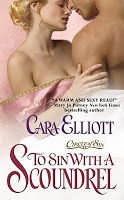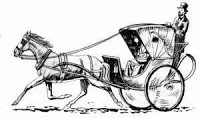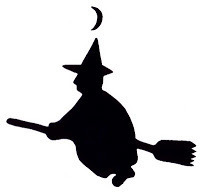Nicola Cornick's Blog, page 48
March 5, 2010
New "website" contest for March!

My website is out of action at the moment, suffering from a fault that means that I can't update it. So whilst the engineers try to fix it for me I have decided that I will post up the contest details here because it is such a lovely prize this month that I don't want anyone to miss the chance to enter. Here are the details:
This month I am offering a trio of books as the website contest prize. First up is a copy of Tempt the Devil by incomparable historical author Anna Campbell. Next is a...
Published on March 05, 2010 07:49
March 4, 2010
Extinctions in the UK - the implications for historical romance books
 Every so often I'm reading a book and a wolf stalks across the historical landscape, or a red kite swoops down in the streets of London and carries off a kitten. Fascinating background colour, but it did get me wondering about extinction dates for various species in the UK because nothing will pull me out of a book faster than a beaver splashing around in a Regency era river.
Every so often I'm reading a book and a wolf stalks across the historical landscape, or a red kite swoops down in the streets of London and carries off a kitten. Fascinating background colour, but it did get me wondering about extinction dates for various species in the UK because nothing will pull me out of a book faster than a beaver splashing around in a Regency era river.So here's a round up of a few extinction dates for species in Britain, although some of these are in dispute.
The...
Published on March 04, 2010 00:09
March 1, 2010
Customs of St David's Day
 Happy St David's Day! David, or Dewi, the patron saint of Wales celebrates his national day today and heralds the arrival of spring. Customs associated with St David's Day include the wearing of one of the national symbols of Wales, either a leek in the hatband or a daffodil in the buttonhole. The daffodil has been preferred in recent times because it's a little more practical than trying to fix a leek in a hatband. The similarity of the word daffodil to the name Dafydd, a Welsh form of...
Happy St David's Day! David, or Dewi, the patron saint of Wales celebrates his national day today and heralds the arrival of spring. Customs associated with St David's Day include the wearing of one of the national symbols of Wales, either a leek in the hatband or a daffodil in the buttonhole. The daffodil has been preferred in recent times because it's a little more practical than trying to fix a leek in a hatband. The similarity of the word daffodil to the name Dafydd, a Welsh form of...
Published on March 01, 2010 04:44
February 27, 2010
Historical Recipe of the Week!

Robert May, born in 1590, published his one and only cook book at the age of 70. It covered all the decades of his life, drawing on the changing styles of cookery in the 17th century and encompassing new culinary fashions, including those of the Restoration Court and at the tables of the rich.
Many dishes were cooked in pastry cases to protect the contents from the heat of the hearth or oven. These cases were not for eating. But as kitchens improved and cooks became more inventive the pastry c...
Published on February 27, 2010 09:00
February 25, 2010
Laws regulating hackney carriages

Since the reign of Queen Anne (1702-1714) there have apparently been 37 Acts of Parliament regulating hackney carriages which are still supposedly in force for taxis today.
1. It is illegal to hail a cab whilst it is in motion. You should wait at the "place appointed." The taxi rank should also provide a water trough for the horses to have a drink.
2.The cab driver is supposed to ask you if you have any "notifiable diseases such as smallpox or the plague." As carrying sufferers is illegal, he s...
Published on February 25, 2010 03:58
February 23, 2010
Academic Crush of the Week!
 It's that time again and this week the academic crush is an oldie but a goodie - the archaeological treasure that is the Time Team! From Phil Harding's questionably stained hat to Mick's woolly jumpers, what's not to love? There are those purists who say that Time Team has debased the academic discipline of archaeology with their three day timescale and their made-for-TV historical soundbites but Time Team have made archaeology accessible and fun for millions of people and surely that can on...
It's that time again and this week the academic crush is an oldie but a goodie - the archaeological treasure that is the Time Team! From Phil Harding's questionably stained hat to Mick's woolly jumpers, what's not to love? There are those purists who say that Time Team has debased the academic discipline of archaeology with their three day timescale and their made-for-TV historical soundbites but Time Team have made archaeology accessible and fun for millions of people and surely that can on...
Published on February 23, 2010 08:16
February 22, 2010
How to Protect against Witches

Above the back door of my house I have a horseshoe fixed to the wall. I knew that this was a good luck symbol but until very recently I had no idea that it was also a throwback to our ancestors' desire to protect their property against witches, ghosts, fairies and demons. Apertures such as windows and doors symbolised ways of entry and therefore the place where a house was vulnerable to bad spirits, so offerings would often be placed near doorways or under the front step.
Other impressive...
Published on February 22, 2010 03:13
February 19, 2010
Bosworth Located - Does It Matter?
 Today the BBC News revealed that the true site of the Battle of Bosworth, 1485, has been discovered and apparently it is about a mile to the south of where it was previously thought to be. But does this really matter? By which I mean of course it matters in a factual, pin-down-the-location sort of way, but in a less tangible sense does it really matter?
Today the BBC News revealed that the true site of the Battle of Bosworth, 1485, has been discovered and apparently it is about a mile to the south of where it was previously thought to be. But does this really matter? By which I mean of course it matters in a factual, pin-down-the-location sort of way, but in a less tangible sense does it really matter?I visited Bosworth Field many years ago when I lived in Leicestershire. Except, of course, I
 didn't, because I was visiting a site that was...
didn't, because I was visiting a site that was...
Published on February 19, 2010 02:00
February 17, 2010
Interesting historical name of the week!
 Do not read on if you dislike profanity because this is the extravagantly named Bastard Hall in the lovely historical town of Much Wenlock in Shropshire. Bastard Hall is a fabulous 15th century house currently up for sale for half a million pounds. It has oak panelling in the drawing room, plenty of exposed beams, inglenook fireplaces and a 16th century priest's hole.
Do not read on if you dislike profanity because this is the extravagantly named Bastard Hall in the lovely historical town of Much Wenlock in Shropshire. Bastard Hall is a fabulous 15th century house currently up for sale for half a million pounds. It has oak panelling in the drawing room, plenty of exposed beams, inglenook fireplaces and a 16th century priest's hole. The original Bastard Hall is thought to date from the 12th century and when it burned down the current house was built on...
Published on February 17, 2010 06:55
February 15, 2010
Romantic Ruin for Valentine's Day!
 OK, so I'm a day late with my Valentine posting (so many chocolate hearts to munch my way through!) but I think you'll agree that this must be one of the most aptly named places to visit on the 14th February! It's Sweetheart Abbey in Dumfries, Scotland.
OK, so I'm a day late with my Valentine posting (so many chocolate hearts to munch my way through!) but I think you'll agree that this must be one of the most aptly named places to visit on the 14th February! It's Sweetheart Abbey in Dumfries, Scotland. Sweetheart Abbey, or Dulce Cor, as the monks referred to it, was founded in 1273 by Lady Devorgilla in memory of her husband John Balliol who had died in 1268. So devoted was she to her late spouse that she carried his embalmed heart around w...
Published on February 15, 2010 01:27



